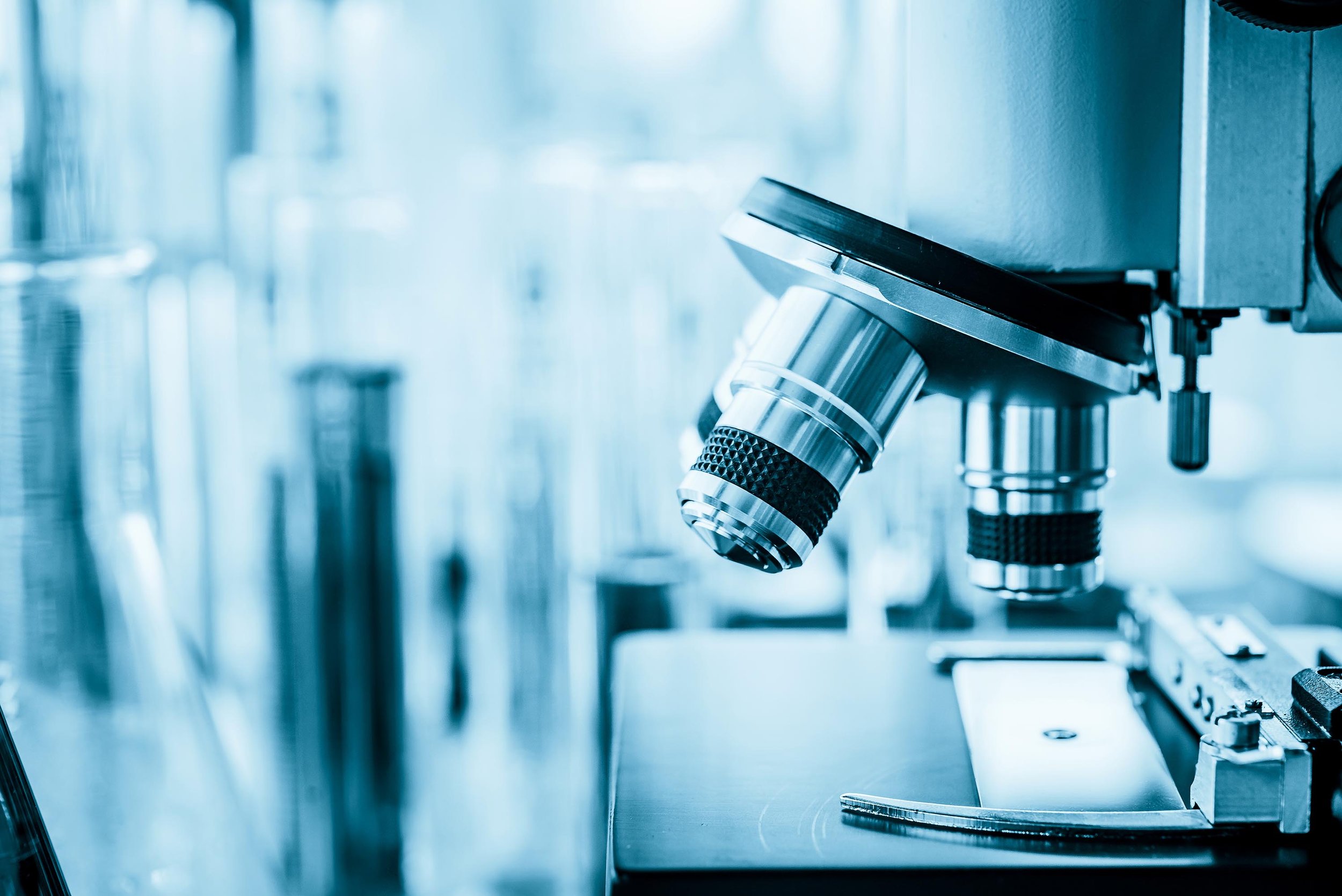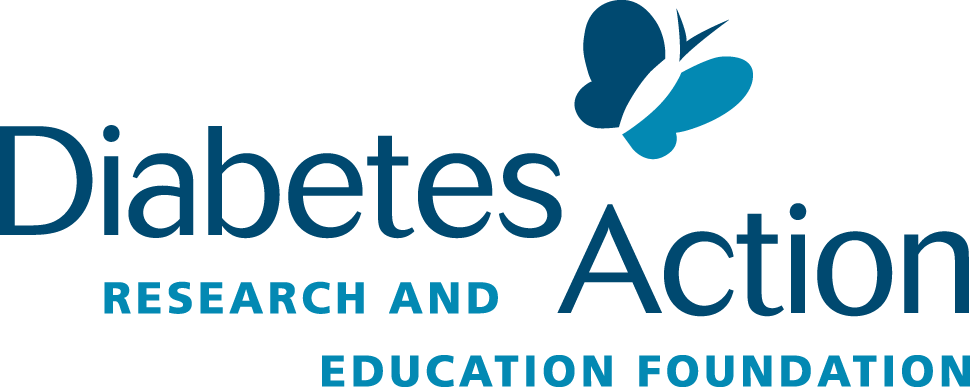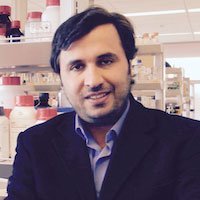
past Research
2022
Home > Research > Past Research > 2022
Cure for Type 1 Diabetes
A PROGRAM FOR THE CURE OF TYPE 1 DIABETES USING A GENERIC DRUG: PHASE II
Researcher:
Denise L. Faustman, MD, PhD., Associate Professor
Harvard Medical School and Director Immunobiology Laboratory
Massachusetts General Hospital
Charlestown, MA
Purpose:
In August 2012, results of the Phase I trial showed that the pancreas of long-term diabetics was able to transiently make insulin after two doses of the Bacillus Camlette-Guerin (BCG) vaccine. In 2018 a follow up report on a total of 232 participants both treated and untreated with BCG, published in the journal Vaccines, showed positive results in lowering blood sugars in subjects with type 1 diabetes to almost normal levels while also reducing the amount of insulin needed about one-third after 5 to 8 years from the initial treatment with the BCG vaccine without any reports of severe hypoglycemia. The 2015 FDA approved Phase II clinical trial, which is now fully enrolled with 150 participants with long-term type 1 diabetes, will determine the dose and frequency of doses required to reverse type 1 diabetes. It is still necessary to obtain funding to track these patients for an additional two years with the ultimate goal of bringing BCG to market as an approved treatment for type 1 diabetes. Five additional clinic trials with BCG/placebo to over 150 subjects are currently ongoing.
CURING DIABETES THROUGH LOCAL IMMUNOTHERAPY OF TRANSPLANTED CELLS
Researcher:
Douglas Sobel, MD
Professor of Pediatrics, Chief Pediatric Endocrinology
Georgetown University
Washington, DC
Purpose:
Islet cell transplantation is a promising treatment of type 1 diabetes. However, the present method for transplanting islets is not very effective and causes severe side effects due to immunosuppressant therapy. To avoid such toxicities Dr. Sobel’s lab devised a device where only small non-toxic amounts of immunomodulatory drugs within the device prevents rejection of islets in mice. Dr. Sobel found two combinations of drugs within the device that cures diabetes. To develop this method to cure diabetes, this study proposes to determine: 1) which single drug within the combination of drugs has the most protecting effect on transplanted MIN cells; 2) what is the minimum drug dose(s) required to inhibit MIN rejection 3) how does the drug work; and 4) determine if mice previously transplanted with a device are able to effectively receive a second device. Successful completion of this proposal may allow future work to create a similar device to cure diabetes in humans.
UNDERSTANDING THE ROLES OF CATHEPSIN H IN TRIGGERING TYPE 1 DIABETES
Researcher:
Jody Ye, PhD
Assistant Professor, Department of Medicine
Albert Einstein College of Medicine
Bronx, NY
Purpose:
The etiology of type 1 diabetes (T1D) has both genetic and environmental components, but their underlying mechanisms are largely unknown. A better understanding of these mechanisms will help the development of innovative therapies to improve beta-cell function. A T1D candidate gene, CTSH, encodes the Cathepsin H enzyme (CatH) in beta-cells. CTSH is associated with early diabetes onset and rapid loss of first-phase insulin response. Dr. Ye’s previously work suggest that CTSH may need to be expressed at an optimal level, both low and high CatH could lead to beta-cell damage. CTSH can be suppressed by inflammatory cytokines, which subsequently promote beta-cell death. However, high CTSH was found in individuals carrying the T1D susceptible variant. In the present study, Dr. Ye will investigate whether high CatH renders beta-cells a greater immunogenicity, triggering T1D. The results of this work could lead to the development of CatH blockers to prevent / delay diabetes.
diabetes prevention
AMERICAN INDIAN YOUTH WELLNESS INITIATIVE
Researcher:
Francine Gachupin, Ph.D., MPH
Associate Professor
University of Arizona College of Medicine
Tucson, AZ
Purpose:
Health behaviors, particularly when adopted early in life, can modify obesity risk and associated morbidities and circumvent a trajectory of life-long chronic disease. Dr. Gachupin has conducted American Indian youth summer camps to promote healthy eating and physical activity that resulted in improved cardiometabolic health. To build on this success and to enhance the impact of their efforts, the intervention must transfer camp-acquired knowledge, skills, and behaviors to the home setting. The goal of this American Indian Youth Wellness Initiative is to develop and test a culturally relevant, school-based, community-led intervention that incorporates the principles of Mind-Body Medicine skills training and parental/caregiver engagement to support American Indian youth in achieving healthy lifestyle choices and reducing risk for obesity and related metabolic diseases. This project will engage on school in Tucson, Arizona; the Ha:Sañ Preparatory & Leadership School.
COMPLEMENTARY / NUTRITION RESEARCH
THE EFFECTS OF METFORMIN AND BERBERINE ON THE PREVENTION AND TREATMENT OF TYPE 2 DIABETES IN ZUCKER DIABETIC FATTY RATS
Researcher:
Guoxun Chen, Ph.D.
Associate Professor, Dept. of Nutrition
The University of Tennessee, Knoxville
Knoxville, TN
Purpose:
The pandemic of type 2 diabetes mellitus (T2DM) is a public health concern. Nutrients and bioactive compounds are critical in the prevention and management of T2DM. Metformin and berberine are two bioactive compounds used to treat T2DM. Vitamin E (VE) includes tocopherols and tocotrienols, and functions as an antioxidant. In our previous project, we have investigated the roles of metformin and a-tocopherol in the prevention of T2DM in Zucker diabetic fatty rats (ZDF). Metformin can cause lactic acidosis, which leads to kidney injury in T2DM, and berberine may have the same anti diabetic effect as metformin to prevent and treat T2DM without side effects in ZDF rats. This proposal will test (1) whether tocotrienols, tocotrienols + a-tocopherol, and berberine can prevent T2DM in ZDF rats; (2) whether a-tocopherol, tocotrienols, tocotrinols + a-tocopherol or berberine treat T2DM in ZDF rats.
TREATING AND PREVENTING COMPLICATIONS
THE FUNCTIONAL ROLE OF MICROENVIRONMENTAL CROSS-TALK IN MESENCHYMAL STROMAL CELL MEDIATED DIABETIC WOUND HEALING
Researcher:
James Ankrum, PhD
Associate Professor
Roy J. Carver Dept. of Biomedical Engineering
Fraternal Order of Eagles Diabetes Research Center
Pappajohn Biomedical Institute
University of Iowa Technology Institute
Iowa City, Iowa
Purpose:
Diabetic wounds are the leading cause of non-traumatic amputation affecting patients with diabetes. Mesenchymal stromal cells (MSC) transplanted into diabetic wounds have been shown to promote healing and resolution of wounds that otherwise would not heal, however the mechanisms at play are not fully understood. Dr. Ankrum seeks to understand a newly hypothesized mechanism of action that relies on monocytes and macrophages clearing donor MSCs through phagocytosis resulting in a shift in macrophage behavior. MSC are known to only live for a few days after transplantation, but recent evidence suggests that the clearance of MSCs by host macrophages induces a shift in macrophage phenotype that can last long after the MSCs are gone. The role of MSC clearing by monocytes and macrophages on reprogramming macrophages to a pro-regenerative phenotype will be examined using in vitro models that mimic many aspects of diabetes. The results of this study will contribute to tailored therapies for patients with type 1 diabetes.
TARGETING TEAD1 TO SUPPRESS NASH PROGRESSION IN DIABETES
Researcher:
Weiqin Chen, PhD
Associate Professor
Medical College of Georgia at Augusta University
Augusta, GA
Purpose:
Nonalcoholic steatohepatitis (NASH) often occurs in patients with metabolic diseases and is highly associated with diabetes. How NASH interplays with diabetes is not clear. There is a need to identify new players and develop novel treatment regimens for NASH in diabetes. Dr. Chen’s lab has found TEAD1 expression goes up in mouse and human NASH livers, and liver cells without TEAD1 are protected from saturate fat-induced cell death, a common type of liver damage in diabetes. Therefore, Dr. Chen wants to examine whether TEAD1 expression is further elevated in diabetic mouse and human NASH livers, and whether increased TEAD1 expression in diabetic liver will make NASH occur more often and severe. Most of all, this study will test when liver TEAD1 is absent or inhibited by a drug, whether there will be less NASH incidence. This study will provide new therapeutic targets and options to treat or delay NASH progression in diabetes.
A DEEP LEARNING-BASED CLOSED-LOOP ARTIFICIAL PANCREAS SYSTEM FOR UNANNOUNCED MEALS AND EXERCISE
Researcher:
Guim Kwon, Ph.D.
Professor
Southern Illinois University Edwardsville
Edwardsville, IL
Purpose:
A closed-loop artificial pancreas system (APS) provides a closest-to-cure treatment for type 1 diabetes. The gap in reaching this goal is developing an algorithm that handles high and low blood glucose (BG) levels caused by meals and exercise. As a step towards closing this gap, Dr. Kwon proposes a proof-of principle study using a rat APS established previously. This study will develop an individualized deep neural network (DNN) for predicting BG levels based on past BG and insulin injection and apply a model predictive control (MPC) method that determines the amount of insulin injection based on the projected BG levels in the setting of unannounced meals or treadmill exercise. Using DNN with an agility to learn and adapt to changing environment in the design of algorithm and a rat APS as a dynamic and versatile in vivo testing platform are innovative approaches in this field.
PRECLINICAL TARGETING OF IMMUNE-ADIPOSE INTERACTION FOR THE TREATMENT OF T2D
Researcher:
Prashant Rajbhandari, PhD
Assistant Professor
Director, Metabolic Assessment Core
Diabetes, Obesity, and Metabolism Institute
Icahn School of Medicine at Mount Sinai
New York, NY
Purpose:
Thermogenic fat cells dissipate excess calories as heat and confers protection against obesity and diabetes. Dr. Rajbhandari’s work have shown that local crosstalk between cytokine interleukin-10 (IL-10)-producing immune cells and fat cells is a determinant of thermogenesis and systemic energy and glucose balance. Deletion of fat IL-10 signaling protects against obesity and insulin resistance, and elicits fat thermogenesis. To further test the hypothesis that fat-specific IL10 receptor directly senses IL-10 in the fat to limit thermogenesis and insulin sensitivity, this study entails two interrelated aims to examine i) metabolic consequences of fat-specific deletion of IL10 receptor in mice by genetic and pharmacological approach, and ii) mechanisms underlying IL-10 inhibition of fat thermogenic gene program. Dr. Rajbhandari's lab has identified IL-10 axis as a novel regulator of fat tissue. This study aims to explore preclinical targeting of immune signaling and fat tissue function in the setting of obesity and type 2 diabetes.
NEW INSIGHTS IN THE PATHOGENESIS OF DIABETES MELLITUS
Researcher:
Gaetano Santulli, MD
Assistant Professor of Medicine
Albert Einstein College of Medicine
Bronx, NY
Purpose:
The main goal of this project is to understand the molecular mechanisms underlying the pathogenesis of diabetes in patients affected by COVID-19. The role of diabetes in COVID-19 is two-fold: not only do people with diabetes present an augmented risk of a severe outcome of COVID-19, but COVID-19 has been shown to also increase the risk of developing diabetes. Dr. Santulli’s hypothesis is that the coronavirus responsible for COVID-19 is causing endothelial dysfunction and that extracellular vesicles secreted by impaired endothelial cells can cause beta cell dysfunction. Dr. Santulli’s lab has preliminary data supporting this hypothesis and has identified some specific molecules contained in endothelial microvesicles that can be targeted to prevent and cure the onset of diabetes in COVID-19 patients. Moreover, the unprecedented relationship between endothelial cells and pancreatic beta cells can also be harnessed and targeted in diabetes mellitus non caused by COVID-19.
PPAR GAMMA DEACETYLATION: A POTENTIAL THERAPEUTIC TARGET TO TREAT DIABETIC VASCULAR COMPLICATIONS
Researcher:
Maria Alicia Carrillo Sepulveda, BSN, Ph.D.
Assistant Professor
New York Institute of Technology College of Osteopathic Medicine
Old Westbury, NY
Purpose:
Obesity-related type 2 diabetes (T2D) has reached epidemic proportions in the United States. A prevalent problem of T2D is vascular complications, such as hypertension, which account for 70% of death among diabetic patients. There are no specific drugs to treat hypertension in diabetic patients. Thiazolidinediones (TZDs), a peroxisome proliferator-activated receptor gamma (PPARgamma) agonists, were the most popularly prescribed antidiabetic drugs due its lowering glucose and blood pressure effects. Unfortunately, adverse effects of TZDs have restricted its use in the last decade. Recent studies identified that PPARgamma deacetylation abolish TZD’s adverse effects. Vascular studies from Dr. Sepulveda’s lab demonstrated that PPARgamma deacetylation has vascular protective effects. This study will investigate whether PPARgamma deacetylation protects against T2D-induced vascular dysfunction and hypertension by using genetic mice with deacetylation-mimetic PPARgamma mutations. Findings from this study will elucidate the vascular effects of PPARgamma deacetylation and help develop new pharmacological strategies to treat diabetic vascular complications.
TESTING NOVEL IMMUNOTHERAPY TO TREAT DIABETES-INDUCED KIDNEY FAILURE
Researcher:
Kai Y. Xu, Ph.D.
Associate Professor of Surgery
University of Maryland School of Medicine
Baltimore, MD
Purpose:
Diabetes causes kidney failure which results in the kidneys no longer being able to remove waste from the body. (Na+ + K+)-ATPase (NKA) is a key enzyme found in large amounts in kidneys. Studies have shown that dysfunction of NKA is associated with diabetic kidney failure, indicating that NKA activity is essential to kidney function. Dr. Xu has discovered a NKA activator and developed a NKA activator-based immunotherapy. Recent studies reveal that newly developed immunotherapy protects kidney function against progression of type 1 diabetes-induced kidney failure in female NOD mice. Dr. Xu hypothesizes that this immunotherapy may be a universal disease-modifying intervention for both type-1 and type-2 diabetes-induced kidney failure. The proposed investigation will test the hypothesis and examine the efficacy of immunotherapy on both type 1 and type 2 diabetes induced kidney failure. This study challenges the critical barrier of existing treatment by testing a novel immunotherapy to advance our knowledge and improve human health.
TARGETING MITOCHONDRIAL DYNAMICS TO REVERSE SKELETAL MUSCLE INSULIN RESISTANCE IN OBESITY
Researcher:
Kai Zou, PhD
Assistant Professor
University of Massachusetts Boston
Boston, MA
Purpose:
Obesity and type 2 diabetes are major public health problems. Current treatments are either not sustainable, too invasive and/or lead to complications, suggesting there is an urgent need for new treatments. Skeletal muscle is the most important organ for metabolism and taking glucose from blood. Therefore, it is important to find new targets in skeletal muscle to develop drugs for type 2 diabetes. Dr. Zou has been focusing on mitochondrial dynamics, especially mitochondrial fission (i.e., fragmentation). Dr. Zou’s lab found that Drp1, a protein controls mitochondrial fission, is increased in skeletal muscle from obese humans and inversely correlated with muscle insulin sensitivity, suggesting Drp1 may be an important regulator of insulin action. This study will use genetic and pharmacological approaches in mice to test the hypotheses that inhibiting Drp1-mediated mitochondrial fission is sufficient to improve skeletal muscle insulin action and whole-body glucose homeostasis in high-fat diet induced obesity and insulin resistance.
ISLET CELL RESEARCH
3D BIOPRINTING OF IPSC-DERIVED ORGANOIDS FOR FABRICATION OF PANCREATIC DEVICES
Researcher:
Ibrahim T. Ozbolat, Ph.D.
Associate Professor
The Pennsylvania State University
University Park, PA
Purpose:
In Dr. Ozbolat’s original project, he aimed to bioprint pre-vascularized pancreatic islets made of mouse insulinoma cells and rat heart microvascular endothelial cells into a perfusion bed in order to create a perfusable platform for microcirculation of the engineered islets. With additional funding, Dr. Ozbolat proposes a new approach and aim to 3D build rationally designed engineered pancreatic organ substitutes via 3D bioprinting using stem-derived vascularized human islets. Accomplishing these goals will establish a novel approach in fabrication of a scalable pancreatic organ substitute for type 1 diabetes.














